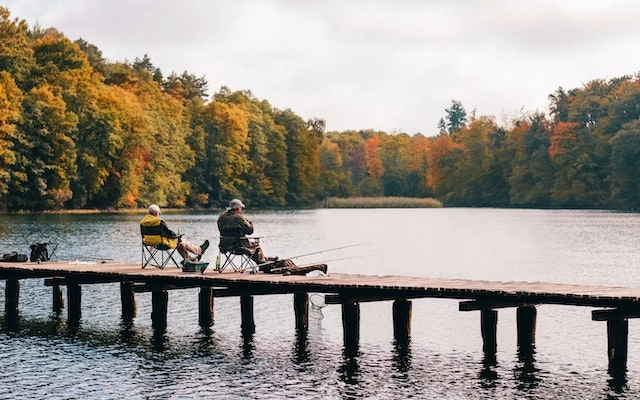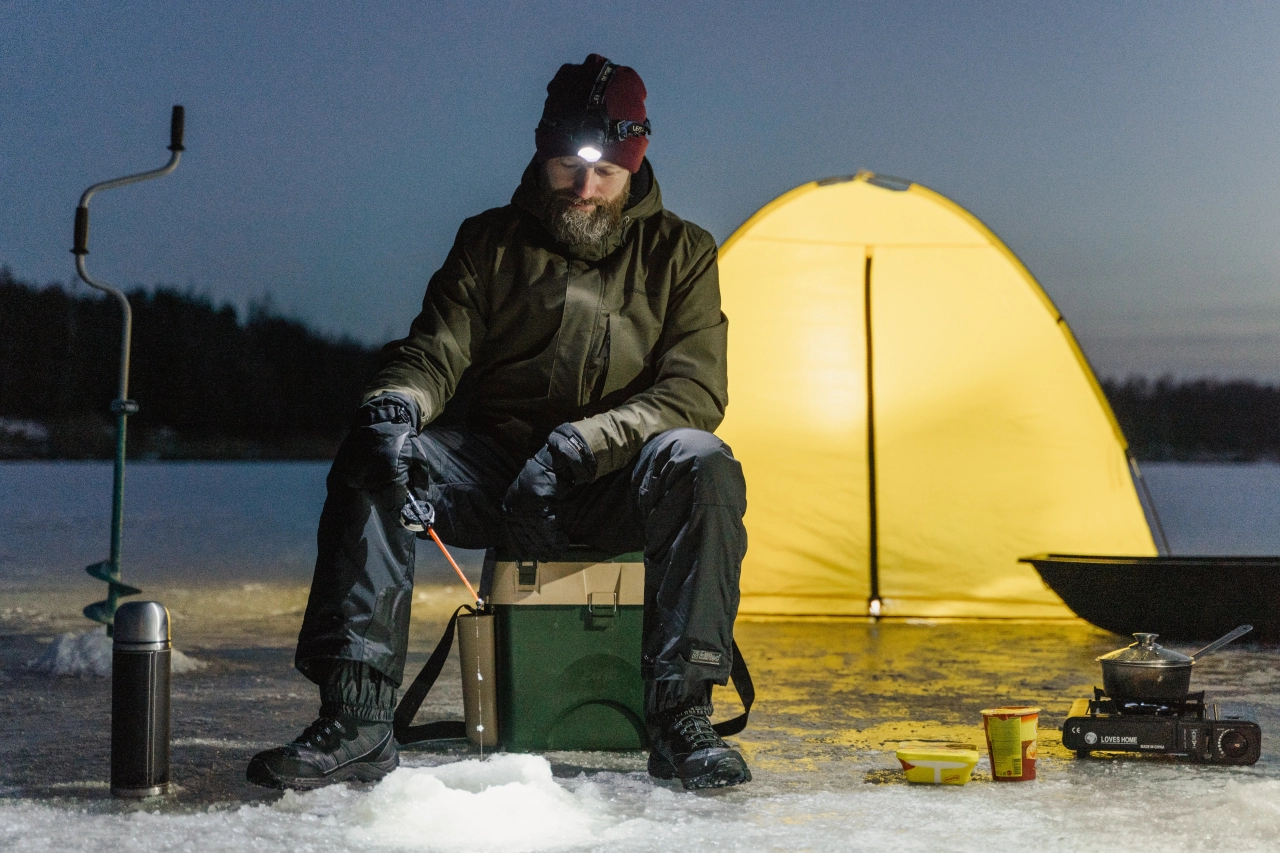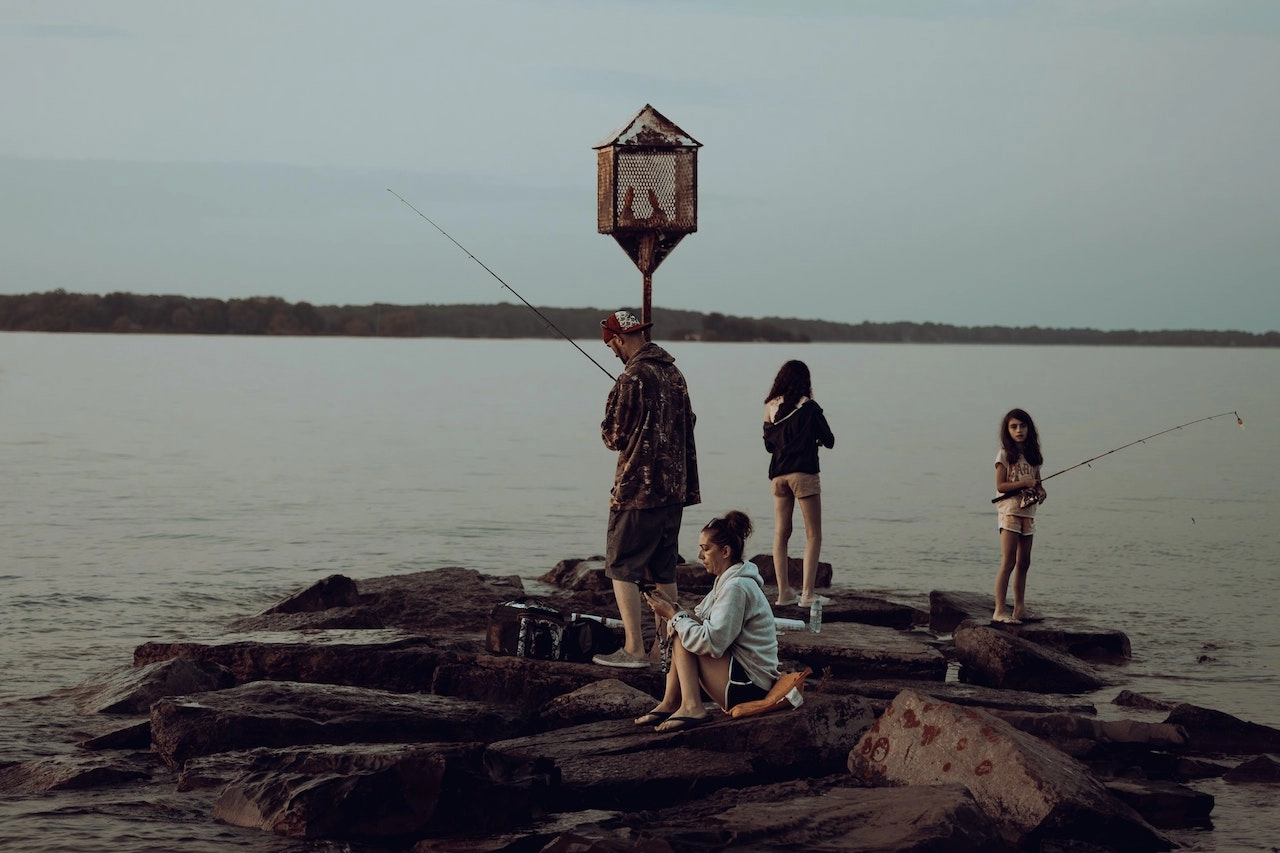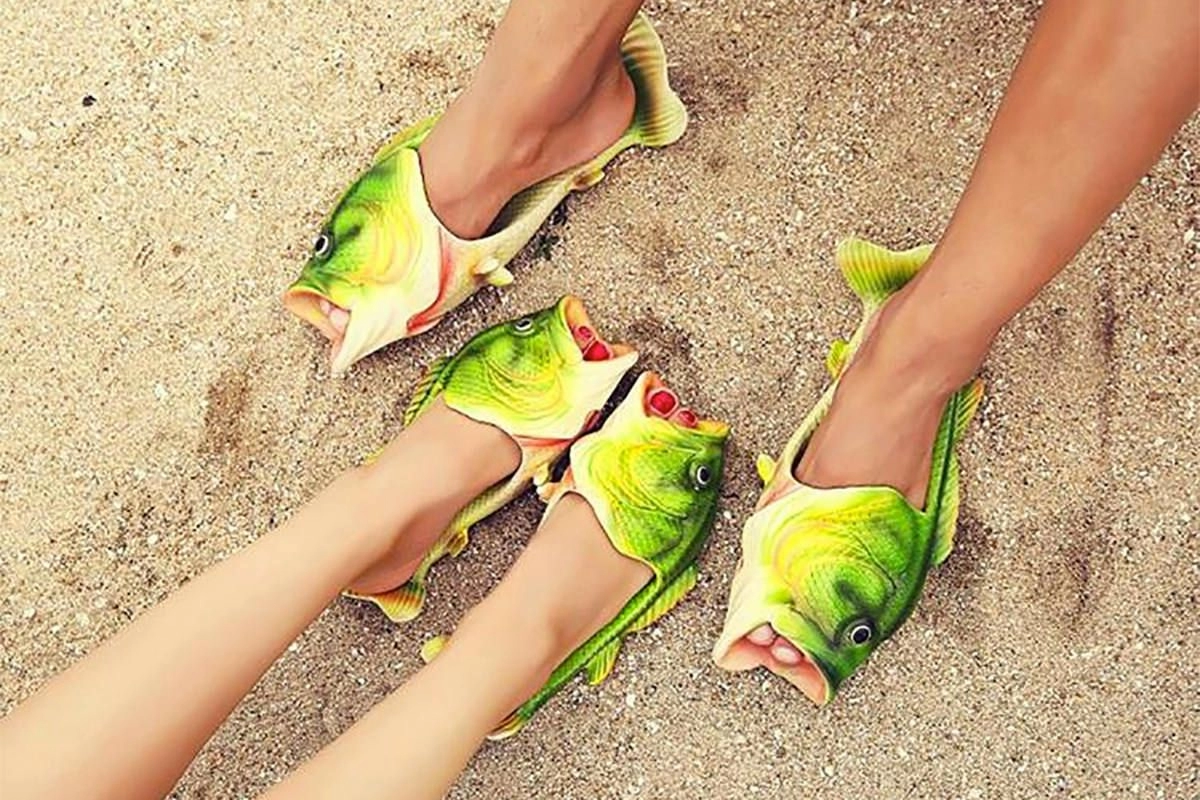10 Essential Tips on What to Wear Fishing for Success
Dress for the Weather: Make sure to check the forecast before you head out and dress accordingly. If it's going to be sunny and hot, wear lightweight and breathable clothing. If it's going to be cold, wear warm and insulating layers.
Wear Comfortable Clothes: Fishing often requires you to move around a lot, so make sure to wear comfortable clothes that allow for freedom of movement. Avoid tight or restrictive clothing.
Wear Appropriate Footwear: Wear comfortable and sturdy shoes with good traction. You may be walking on wet and slippery surfaces, so choose shoes that provide a good grip.
Wear a Hat: A hat can protect your face and neck from the sun and also help to keep you cool. Choose a hat with a wide brim to provide maximum protection.
Wear Sunglasses: Polarized sunglasses will help you to see through the glare of the water and also protect your eyes from harmful UV rays.
Wear Waterproof Clothing: If you're going to be fishing in or near water, consider wearing waterproof clothing or bringing a rain jacket in case of unexpected rain.
Dress in Layers: Layering your clothing can help you adjust to changes in temperature throughout the day. Start with a lightweight base layer, add a mid-layer for warmth, and finish with a waterproof or windproof outer layer.
Avoid Bright Colors: Fish can be scared away by bright and flashy clothing. Stick to more natural colors like greens, browns, and blues.
Don't Forget Insect Repellent: Insects can be a real nuisance when you're fishing. Make sure to bring insect repellent or wear clothing that covers your skin to avoid bites. Dress for Safety: If you're going to be fishing in a boat, make sure to wear a life jacket. It's also a good idea to wear clothing that is highly visible in case of an emergency.

WHAT TO WEAR FISHING??
Introduction
Fishing is a popular pastime enjoyed by many people around the world. Whether you are a seasoned angler or a novice, choosing the right clothing for your fishing trip can significantly affect your comfort and overall experience. In this article, we will discuss what to wear fishing and provide some helpful tips to make your fishing trip more enjoyable.
● Weather Conditions
One of the most important factors to consider when choosing what to wear fishing is the weather conditions. If you are fishing in cold weather, you should wear layers to keep warm. You may also want to wear a waterproof jacket or waders to stay dry. In warm weather, choose lightweight and breathable clothing that will keep you cool and comfortable.
● Clothing Options
When it comes to clothing options for fishing, there are several options to choose from. Many anglers prefer to wear fishing-specific clothing, such as fishing shirts and pants that are designed to be lightweight, quick-drying, and offer sun protection. You can also wear regular athletic or outdoor clothing that is comfortable and allows for a full range of motion.
● Footwear
Your choice of footwear is also important when it comes to what to wear fishing. You will want shoes that are comfortable, waterproof, and offer good traction on wet and slippery surfaces. Some popular options include fishing sandals, wading boots, and waterproof hiking boots.
● Accessories
In addition to clothing and footwear, there are several accessories you may want to consider wearing for your fishing trip. Sunglasses are essential for protecting your eyes from the sun's glare and can also help you see fish in the water. A hat with a brim can also provide shade and protect your face and neck from the sun's rays. Gloves may also be useful for handling fish or bait.
Choosing the right clothing and accessories for your fishing trip can make a big difference in your comfort and enjoyment. By considering the weather conditions, choosing the right clothing and footwear, and bringing the necessary accessories, you can ensure a successful and enjoyable day on the water.

WHAT TO WEAR DEEP SEA FISHING
When going deep-sea fishing, it's important to wear clothing that is both comfortable and functional. The deep sea can be a harsh environment, with strong winds, bright sun, and salt spray, so it's important to dress appropriately to stay comfortable and safe.
Here are some tips on what to wear for deep-sea fishing:
Dress in layers: The temperature can change quickly out on the open sea, so it's best to dress in layers that you can add or remove as needed. Start with a moisture-wicking base layer to keep sweat away from your skin, then add a warm mid-layer like a fleece or soft shell, and top it off with a waterproof and windproof jacket.
Choose breathable materials: When selecting clothing, look for breathable materials like cotton, polyester, or nylon. These materials will wick away sweat and keep you cool and comfortable throughout the day.
Wear comfortable shoes: Deep sea fishing involves a lot of standing and moving around, so it's important to wear comfortable shoes with good traction. Opt for closed-toe shoes with non-slip soles, like boat shoes or sneakers.
Protect your skin: The sun can be intense out on the water, so it's important to protect your skin with sunscreen, a hat, and sunglasses. Choose a hat with a wide brim to shade your face and neck, and wear polarized sunglasses to reduce glare and protect your eyes from UV rays.
Bring rain gear: Even if the forecast calls for clear skies, it's always a good idea to bring rain gear on a deep-sea fishing trip. A sudden rainstorm can quickly make the deck slippery and uncomfortable, so be prepared with a waterproof jacket and pants.
By following these tips, you'll be comfortable and safe on your deep-sea fishing adventure.
WHAT TO WEAR FOR FLY FISHING
When it comes to fly fishing, wearing the right clothing can make all the difference in ensuring a comfortable and successful fishing experience. Here are some important considerations for what to wear when fly fishing:
Wading gear: If you plan on wading into the water to fish, you'll need a wading jacket, waders, and boots. Look for breathable, waterproof materials that will keep you dry and comfortable.
Layers: Even if the weather is warm, it's important to wear layers when fly fishing. Temperatures can change quickly, and it's important to be prepared for any weather conditions. Start with a moisture-wicking base layer, add a fleece or wool mid-layer, and finish with a waterproof outer layer.
Hat and sunglasses: Protect your face and eyes from the sun's harmful UV rays with a wide-brimmed hat and polarized sunglasses. The hat will also help keep the sun out of your eyes while casting.
Gloves: Fly fishing can be hard on your hands, especially if you're handling fish. Wear gloves to protect your hands from cuts, scratches, and cold water.
Insect repellent: Depending on where you're fishing, insects like mosquitoes and black flies can be a real nuisance. Bring along insect repellent to keep them at bay.
Footwear: Even if you're not wading, you'll want to wear sturdy, waterproof shoes with good traction. This will help you navigate uneven terrain and keep your feet dry if it's raining or you step in a puddle.
GUIDELINES BENEFITS
By following these guidelines, you'll be comfortable and prepared for a successful day of fly fishing. Don't forget to check the weather forecast before heading out, and dress appropriately for the conditions you'll be fishing in.
WHAT WEAR FISHING WOMAN
Fishing is a wonderful outdoor activity, and it is important to wear the right clothing to ensure maximum comfort and protection from the elements. Here are some tips on what to wear fishing as a woman:

Choose Comfortable and Breathable Clothes
When it comes to fishing, comfort is key. Choose loose-fitting clothes that are made of breathable fabrics such as cotton, linen, or synthetic materials. Avoid wearing tight clothes as they can restrict movement and make it difficult to cast.
● Wear Appropriate Footwear
Wear closed-toe shoes that are comfortable and have good traction. Sandals or flip-flops are not suitable for fishing as they do not offer enough protection for your feet.
● Dress in Layers
The weather can be unpredictable when you're out fishing, so it's essential to dress in layers. Start with a base layer of moisture-wicking material, add a mid-layer for warmth, and finish with a waterproof and windproof outer layer.
● Bring a Hat and Sunglasses
A hat will protect your head and face from the sun, while sunglasses will protect your eyes from harmful UV rays and glare from the water.
● Use Sunscreen
Apply sunscreen with at least SPF 30 to protect your skin from the sun's harmful rays. Don't forget to reapply every two hours or after swimming.
● Wear a Life Jacket
Safety should always come first, so wearing a life jacket is a must. Choose one that fits snugly and has adjustable straps.
wearing the right clothing when fishing is essential for maximum comfort and protection. By following these tips, you can ensure a safe and enjoyable fishing experience.
WHAT SHOES TO WEAR DEEP SEA FISHING
Deep sea fishing can be an exciting and challenging activity, and proper attire is crucial for a comfortable and safe experience. One of the essential items to consider is the type of shoes to wear. Here are some key factors to keep in mind when choosing shoes for deep-sea fishing:
● Traction
The deck of a fishing boat can be slippery, especially when wet. It's essential to wear shoes that provide adequate traction to avoid slipping and falling. Look for shoes with non-slip soles that have a good grip on both wet and dry surfaces.
● Protection
Your shoes should also provide protection for your feet. Fishing boats can be cluttered with sharp hooks, tools, and other equipment that could cause injury. Closed-toe shoes are recommended to protect your feet from these hazards.
● Water resistance
You will likely get wet while deep sea fishing, whether it's from splashing waves or rain. Wearing shoes that dry quickly and are water-resistant can help keep your feet dry and prevent discomfort.
● Comfort
Fishing trips can last for several hours, so it's important to wear shoes that are comfortable for extended periods. Look for shoes with good arch support and cushioning to reduce fatigue and discomfort.
● Breathability
It's also essential to choose shoes that are breathable, especially if you'll be fishing in warm weather. Breathable shoes help prevent your feet from becoming too sweaty and uncomfortable.

HOW IMPORTANT TO CHOOSE THESE OPTIONS FOR DEEP-SEA FISHING??
Some popular shoe options for deep-sea fishing include deck shoes, fishing boots, and water shoes. Deck shoes are popular for their excellent traction, comfort, and style. Fishing boots provide excellent protection and are ideal for colder weather. Water shoes are lightweight and designed for water sports, making them an excellent option for deep-sea fishing.
when choosing shoes for deep sea fishing, prioritize traction, protection, water resistance, comfort, and breathability. Consider your personal preferences and the weather conditions when selecting the best shoes for your fishing trip.
FISH SANDALS
Fish Sandals: A Creative Fashion Statement
Fish sandals are a quirky and eye-catching footwear option that has gained popularity in recent years. These sandals, which feature a fish-shaped design, are a unique and playful way to add a touch of whimsy to any outfit. Here are some reasons why fish sandals are the perfect choice for those looking to make a statement with their fashion:
● Comfortable and Versatile Design
Fish sandals are not only stylish but also comfortable to wear. They come in various designs, such as open-toe or closed-toe, and are made from materials that provide maximum comfort, such as rubber or leather. Fish sandals can be worn with a range of outfits, from shorts and sundresses to jeans and casual wear.
● Fun and Playful Aesthetic
Fish sandals are a playful fashion statement that adds a fun and quirky touch to any outfit. They are perfect for those who like to experiment with fashion and express their unique sense of style.
Fish sandals come in a range of colors, patterns, and designs, making it easy to find a pair that suits your personality and style.
● Perfect for Beach or Poolside
Fish sandals are a perfect option for the beach or poolside. Their water-resistant properties make them ideal for wearing in wet environments. The fish-shaped design adds a touch of oceanic style to your beach or poolside look. Fish sandals are lightweight and easy to pack, making them the perfect addition to your vacation wardrobe.
● Eco-Friendly Option
Fish sandals are often made from eco-friendly materials, such as recycled plastic or natural rubber. This makes them a great choice for those who are environmentally conscious and want to reduce their carbon footprint.
fish sandals are a fun and creative fashion statement that offers both style and comfort. They are versatile, playful, and perfect for the beach or poolside. So, why not add a pair of fish sandals to your shoe collection and make a splash with your fashion sense?

FISH BAG
Fish Bag: Keeping Your Catch Fresh
If you enjoy fishing, you know the importance of keeping your catch fresh. A fish bag is a great way to do this. It's a handy container designed specifically to keep fish cool and fresh until you get home.
Benefits of a Fish Bag
A fish bag has several benefits. Firstly, it helps to keep your catch cool and fresh. When you're out fishing, your catch can quickly become warm and start to spoil. A fish bag will keep the fish at a cooler temperature, slowing down the decomposition process.
Secondly, a fish bag is easy to carry. Unlike a cooler, which can be bulky and heavy, a fish bag is lightweight and easy to transport. You can easily pack it in your car or boat, and it won't take up too much space.
Types of Fish Bags
There are several types of fish bags to choose from. Some are made of heavy-duty PVC material, while others are made of lightweight fabric. You can also find fish bags that come with built-in coolers or ice packs to keep your catch even cooler.
Tips for Using a Fish Bag
● To get the most out of your fish bag, there are a few tips you should keep in mind:
● Make sure your fish bag is clean before using it. You don't want any bacteria or contaminants to get into your catch.
● Keep your fish bag in a shaded area to help keep it cool.
● If you're using a fish bag with ice packs, make sure they're frozen before use.
● When you're packing your fish in the bag, make sure to leave enough room for air to circulate.